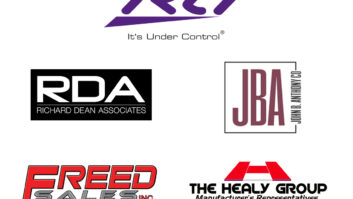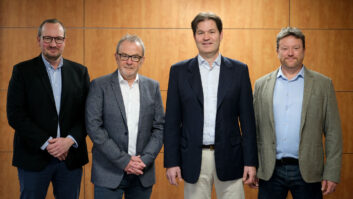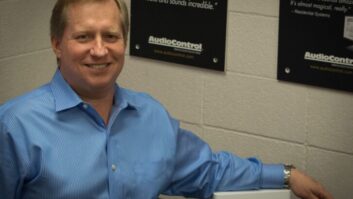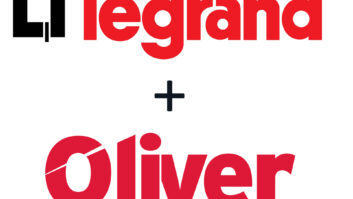
OVERVIEW
The need: A CE market product vendor that made headphones didn’t think they needed receivables management, credit protection, or other financial services– because business was booming, and they had a preconceived notion that outsourcing those functions would be a costly and unattractive option. But on a closer look, they realized they did have issues that needed addressing, and that outsourcing could be the best and most affordable option.
The solution: The company’s CPA determined that CIT could tackle this company’s fast-sales-growth issues with an integrated, two-piece solution: building an accounts receivables outsourcing infrastructure, and supplying asset-based financing to support the company’s exceptional growth.
The benefit: CIT became the headphone company’s operational backbone, providing the company with a stronger financial foundation. As a result, CIT’s best-in-class processes gave the company the ability to continue its strong growth and, eventually, become an attractive M&A target.
An unexpected spike in sales is the dream of every company. But sudden success can submerge a company if they are not careful. If they can’t keep up with the demand and secure a strong financial foundation to support inventory growth, companies may not be able to take advantage of the opportunity at hand. It’s easy for a company to let complacency or preconceived notions about options blind them to the need for action.
Just such an overwhelming sales surge was faced by a West Coast headphone company, whose founder had leveraged a niche product into a successful consumer product. The founder and his team constructed a company based on reasonable growth projections and moderate overall sales, and opened a line of credit from a bank to fund its forecasted growth.
But over the next three to four years, they outperformed their projection and annual sales ballooned from $15 million to $475 million.
Like most young, growing businesses, the headphone company concentrated more on generating sales volume than in building infrastructure. Without strong retail credit intelligence and collections procedures in place, the company continued to ship to accounts that proved to be slow paying and increasingly past due. Delayed payments began to adversely affect their working capital position. As the company’s sales volume increased, its inventory needs increased, its cash conversion cycles elongated, and its infrastructure problems expanded, creating a cash crunch. The company found itself burning through ever-shrinking cash reserves just to run-in-place, crippling necessary re-investment in the company’s growth. Employees were stretched thin and were forced to wear multiple hats – sometimes ill-fitting ones – all while sales continued to boom.
“All of a sudden, they found themselves constantly playing catch-up,” explains Bob Lewin, director of strategy at CIT Commercial Services. “The company’s original bank line of credit wasn’t keeping pace with its funding needs for inventory and infrastructure, and its staff simply wasn’t equipped to handle the higher-level of sales or credit inquiries from new retailers. The company’s CPA suggested it contact CIT–despite traditional preconceived notions about outsourcing as being too expensive or complicated.”
The Two-Step CIT Solution
After assessing the company’s situation, CIT implemented an integrated, two-piece solution: building an AR outsourcing infrastructure, and providing asset-based financing support to accommodate its unexpected growth.
“When a company experiences growth, it’s common that it needs to build up its infrastructure,” Lewin observes. “The infrastructure you build to support a $15 million business is substantially different than the infrastructure you need for a half billion dollar company. When growth is this rapid, this difference is exposed. You need more depth and experience as your customer credit exposure grows, and precise systems and procedures need to be developed to support the volume.”
First, CIT supplemented the headphone company’s existing internal AR team with outsourced accounts receivable and collections services and helped better align the company’s risk/reward balance. This allowed the company to add experience, and credit intelligence and systems in areas that the company lacked.
New orders immediately began to flow through the CIT process, and existing customers were notified to pay to a new lockbox. Once CIT’s procedures and systems were installed and initiated and the company’s internal staff was trained, collections – and cash flow – sped up.
Second, CIT constructed a more flexible asset-based financing solution to fund inventory and infrastructure. Instead of an inflexible line of credit limit, CIT’s financing solution was based on the headphone company’s growing assets of accounts receivable and inventory, which created more availability. A dedicated CIT account executive worked intimately with the headphone company. Because CIT handled AR and collections, this relationship manager knew what was developing for future sales. He could see the orders coming through the system and was immediately cognizant of the company’s developing growth needs. Maintaining nearly day-to-day contact with the headphone company’s CFO, CIT’s relationship manager could then act proactively to help the company get access to the working capital it needed.
“Overall, the total evolution probably took only a cycle or two – 45-60 days – of collections to iron out some of the kinks,” Lewin reports.
The Benefits of Good Management
CIT became a huge part of the headphone company’s operational backbone, providing the company with a stronger financial foundation. As a result, CIT’s best-in-class processes helped the company continue its strong growth and, eventually, to become an attractive M&A target.
“The company didn’t have to invest dollars into operations,” Lewin adds, “and it removed the pressure of having to finance systems development. Once its infrastructure and financial issues were addressed, the company could do what it does best – focus on innovating new products and building its brand.”
CIT Commercial Services (CIT) is one of the nation’s leading providers of financial services to consumer product companies and has been providing financing and advisory services to small, mid-sized, and large businesses for more than a century. It typically forms long-standing relationships with clients, both large and small, in a wide variety of industries, including consumer electronics.
For more information:
https://www.cit.com/commercialservices • 800-248-3240













